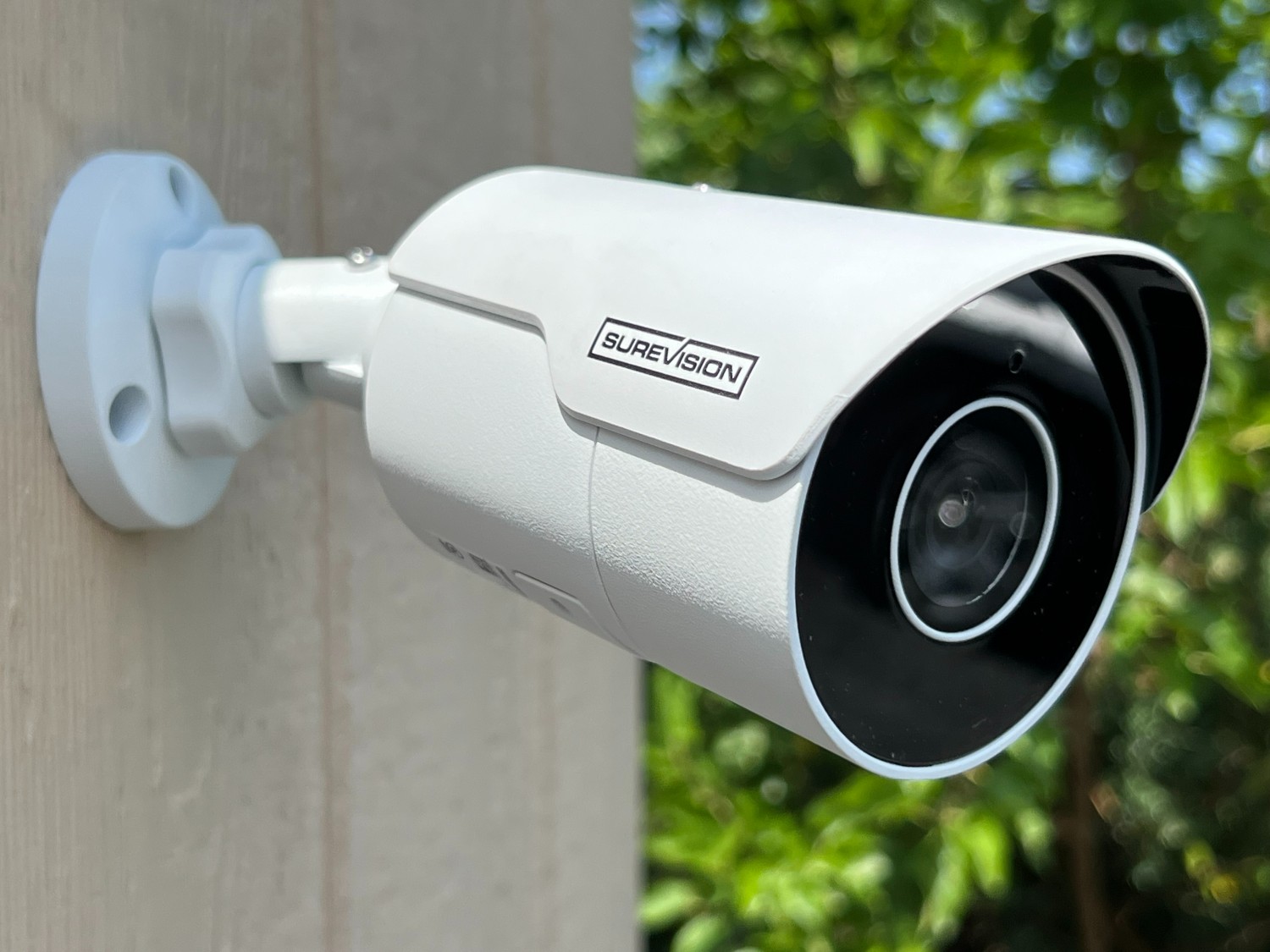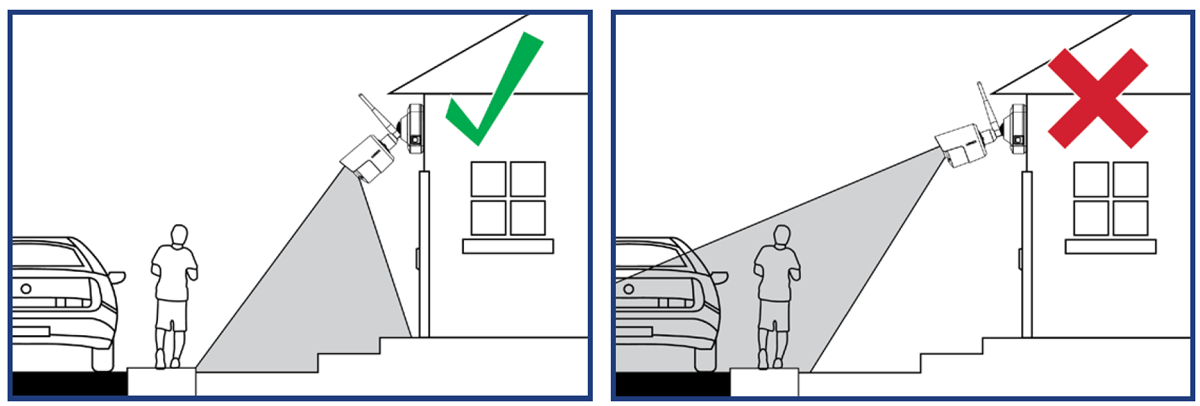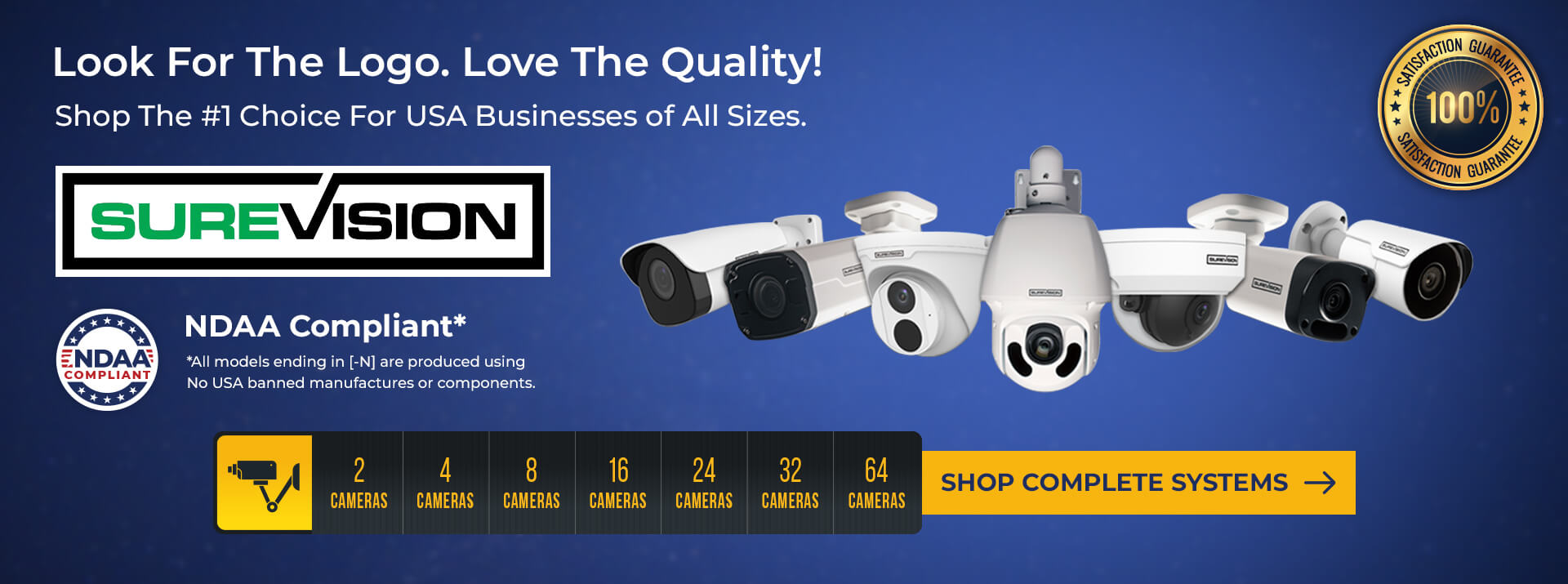Outdoor Security Camera System Placement Diagrams
Jun 5, 2023

Outdoor security camera placement and positioning are imperative for customers and installers. After all, you want to make sure you are monitoring the most important areas of your property. Whether you’re monitoring customers entering through your front door or keeping an eye on product inventory going out the back door, it is very important to know the best way to position and place your security cameras.
These considerations will help you choose the appropriate number of cameras and the best viewing angles for the cameras in your system. Consult these security camera placement diagrams for insights on how to best position the outdoor security cameras on your property.
Positioning Cameras at the Optimal Height and Distance
We suggest placing your cameras high enough that intruders cannot reach, cover, or vandalize your cameras, but low enough that the intruders will see that you do have security cameras. This will serve as a great deterrent, and provide a better viewing angle to catch facial details. The deterrence of cameras can stop a crime before it even occurs! We find placing your cameras about 8 to 10 feet off the ground ideal in terms of height.
Position Cameras to Avoid Blind Spots

Be careful not to position your cameras in a way that does not create blindspots
If using a wide-angle 2.8mm lens camera, you may wish to cover a large, wide area. You may wish to focus up close and personal on an entrance, an exit, or even a driveway. In this scenario, you may consider a motorized zoom camera. If using a pan tilt zoom camera you will have the most flexibility as you can move the camera up, down, left, and right through your camera system and/or cell phone app. As you can imagine, the type of camera and angle you are looking for will impact the placement of your outdoor security camera system.
Position Cameras at the Corners
The goal in how to position security cameras is to maximize your area of view while minimizing blind spots. As we show in our security camera placement diagrams, this means placing security cameras at the corner of interior or exterior walls.
Cover the Most Important Areas
There are several important considerations when determining outdoor security camera system placement. Focus on the main areas you wish to cover and whether you want cameras with wide-angle lenses, motorized zoom lenses, or Pan-Titt-Zoom (PTZ) capabilities. This will differ from install to install depending on your business objectives and overall surveillance priorities or goals. All our systems have advanced analytics so you can choose the various features that will further help you from counting objects, intrusion monitoring, or simply setting up motion detection. In addition to consulting our security camera placement diagrams, here is a list of some questions and considerations that you may want to ask yourself or one of our representatives.
| Front Door / Entrance - Do you want to monitor a broad wide area or do you want closeups of the visitors that enter your facility? Choose between a wide angle or adjustable lens. | |
| Parking Lot - How big is your lot? Do you want to cover a wide broad area or is there an area or areas in which you need to get a close-up? Would a pan tilt zoom camera be an option in order for you to “get up close and personal?” | |
| Back Door - Keep an eye on employees, customers, or inventory moving in and out of your facility. Know what is going on “in the back.” What is the size of the back of your facility? Are there more important areas than others? | |
| Side and Windows - Be sure to consider the sides of the property in your outdoor security camera placement. Are there windows that are accessible? Where are the blind spots? Is this an area that is easily accessible to intruders? | |
| Elevators / Stairs - Do you want to monitor outside the elevator to see who is getting off and on? Many businesses and hotels do and take advantage of the time stamp feature to track the hours that people are coming and going. | |
| Other Entrance Pathways - Are there any other paths that people can or would use to enter your business? Consider adding security in these important areas. | |
| Loading Docks - Inventory control is key to the success of any business. Make sure you are shipping the right products at the right time. Inventory loss is always at the top when it comes to the overall efficiency of the business. |
Sunlight Glare
Do your best to not point outdoor cameras toward the sun. Bright light will cause glare in the surveillance video and can affect details in your footage. Try to angle your outdoor cameras in a way to limit direct light from the sun in how you position your outdoor cameras. If you have a bright area it is best to consider our cameras with built-in Wide Dynamic Range (WDR). These cameras will reduce the glare from the sunlight and compensate to provide a better outdoor viewing experience. WDR security cameras will drastically enhance the quality of your video on very bright and sunny days. The direction of sunlight isn’t reflected in our security camera placement diagrams, so watch for this on your own properly and adjust accordingly.
Consider More than Camera Coverage
When determining how to position your outdoor cameras, consider the installation process and wiring. Are the areas accessible and easy for you to get to in order to run the wire? Will you be able to run the wire through the wall or does a wire need to be placed in a conduit or even buried in some situations? Consider the best and most effective path to run the cables from the back of the recorder to each surveillance camera.
Remember, when you penetrate a hole in a building or your home, be sure to fill the hole with some type of filler such as silicone. This filler will act as a barrier from the elements, insects, or any other small creatures that may try to access your building or home. Some installers even use a low-voltage box for the connections and simply mount the camera next to the box for a more professional look. In addition, if you need to change a camera you will not have concerns about tearing the cable connections if it makes contact with the wall. Wiring is not reflected in our security camera placement diagrams, so be sure to consider this as it applies to your own property.
The nice thing about using CCTV Security Pros is that our cameras can ALL be used both indoor and outdoor.
Outdoor Security Camera Systems
These complete outdoor security systems include the recorder, cables, connections, and the number of cameras you need to effectively cover your property. Choose by the number of cameras for the system size that’s right for you.
- 2 Camera Systems
- 4 Camera Systems
- 8 Camera Systems
- 16 Camera Systems
- 24 Camera Systems
- 32 Camera Systems
- 64 Camera Systems
Talk to an Expert About Your Surveillance System
Outdoor security camera placement will be a key factor in your installation. Reviewing your specific location thoroughly will help you choose the best system, cameras, and the number of cameras that you will need. Call us for expert advice at (888) 653-2288.





